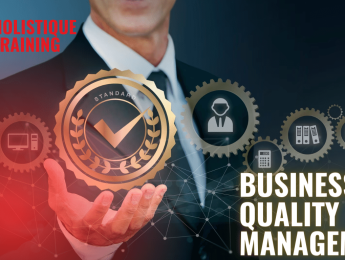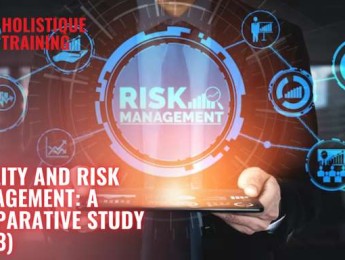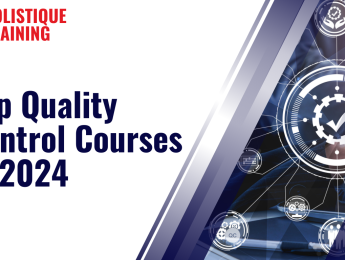- Table of Contents
- What Is Quality Management?
- Why Is Quality Management Important for a Business?
- Enhancing Customer Satisfaction
- Competitive Advantage
- Cost Reduction
- Employee Engagement
- Regulatory Compliance
- Reputation Management
- Total Quality Management (TQM) Techniques
- 1- Continuous Improvement (Kaizen)
- 2- Customer Focus
- 3- Process Management
- 4- Employee Empowerment
- 5- Data-Driven Decision Making
- 6- Supplier Collaboration
- Measuring Quality Management Efforts
- Technology Integration in Quality Management
- Cloud-Based Quality Management Systems (QMS)
- Artificial Intelligence (AI) and Machine Learning (ML)
- Predictive Quality Analytics
- Integration of Internet of Things (IoT)
- Mobile Quality Management Apps
- Enhanced Collaboration and Communication Tools
- Quality Management Across Different Industries
- 1- Quality Management in Construction
- 2- Quality Management in Oil & Gas
- Common Threads Across Industries
- Conclusion
Introduction
Quality management has become an indispensable aspect of modern business operations. With customers demanding excellence and competition intensifying, organisations must prioritise the consistent delivery of high-quality products and services. In this blog post, we will explore the concept of quality management, understand its significance for businesses, and delve into six Total Quality Management (TQM) techniques that can empower organisations to achieve exceptional standards.
What Is Quality Management?
Quality management is a comprehensive approach that continuously improves products, processes, and services to enhance customer satisfaction and organisational performance. It involves identifying customer requirements, establishing quality standards, implementing efficient processes, and continuously monitoring and improving performance to deliver high-quality outputs consistently.
Why Is Quality Management Important for a Business?
Enhancing Customer Satisfaction
Quality management plays a pivotal role in shaping the overall customer experience. In a world where consumers have myriad choices, businesses prioritising and consistently delivering high-quality products and services stand out. Beyond meeting basic needs, quality management involves exceeding customer expectations. It's about creating an emotional connection by anticipating desires and preferences. A satisfied customer is not just a one-time buyer; they become a loyal advocate for the brand, sharing positive experiences and contributing to a positive brand image. Therefore, quality management becomes a strategic tool for enhancing customer satisfaction, building long-term relationships, and fostering a community of brand enthusiasts.
Competitive Advantage
In a marketplace flooded with options, a commitment to quality provides a distinct competitive advantage. It's not merely about meeting industry standards but setting new benchmarks. Businesses that invest in quality management signal to customers that they prioritise excellence. This reputation becomes a powerful differentiator, attracting a discerning customer base that values superior quality. A strong market position is not just about the product but the entire experience. Quality management ensures that this experience is consistently positive, giving the business a competitive edge that extends beyond the product or service's features.
Cost Reduction
Quality management is not solely an investment; it's a strategic cost-saving measure. Identifying and rectifying defects, errors, and inefficiencies early in the process prevents costly rework and recalls. By implementing rigorous quality standards, organisations reduce the likelihood of defects, minimising waste and optimising resource allocation. Operational efficiency improves as streamlined processes become the norm, leading to significant cost reductions in the long run. Quality becomes an integral part of cost management, contributing to financial sustainability and allowing businesses to allocate resources strategically for growth and innovation.
Employee Engagement
Employees are the backbone of any organisation, and their engagement is closely tied to its commitment to quality. When integrated into the company culture, quality management techniques create a sense of purpose and pride among employees. When individuals see that their work contributes to delivering high-quality products or services, it enhances job satisfaction and overall morale. Empowering employees to participate actively in quality improvement initiatives fosters a collaborative and innovative environment. As employees feel valued and connected to the organisation's mission of excellence, their engagement becomes a driving force behind sustained quality improvements and organisational success.
Regulatory Compliance
Adhering to regulatory standards is another crucial benefit of quality management. In various industries, businesses must comply with many regulations and standards to ensure the safety, legality, and quality of their products or services. Quality management systems provide a structured framework for businesses to monitor and enforce compliance. This protects the business from legal issues and fines and builds trust with customers who seek products or services that meet or exceed industry regulations.
Reputation Management
Quality management directly influences a business's reputation. Consistently delivering high-quality products or services establishes a positive reputation in the market. A positive reputation, once earned, can become a powerful asset. Customers are likelier to choose a brand with a history of reliability and quality. Additionally, a good reputation attracts top talent, as employees tend to work for companies known for their commitment to excellence. Reputation management, as a benefit of quality management, extends beyond customer perception to influence the overall perception of the business in the industry and among stakeholders.
Total Quality Management (TQM) Techniques
Total Quality Management is a management philosophy emphasising a company-wide commitment to quality. TQM integrates quality principles and techniques throughout all aspects of an organisation, involving every employee and stakeholder in the pursuit of excellence. Let's explore six TQM techniques that can drive quality improvement in your business:
1- Continuous Improvement (Kaizen)
At the heart of TQM lies the principle of continuous improvement, often referred to as Kaizen. It is a dynamic philosophy that encourages organisations to enhance processes, products, and services consistently. Unlike sporadic improvements, Kaizen instils a culture of ongoing learning and innovation. Employees at all levels are empowered to identify areas for enhancement and actively encouraged to seek incremental improvements in their daily work. This commitment to continuous improvement creates a growth cycle, driving organisational innovation and adaptation to changing market dynamics.
2- Customer Focus
Customer focus is a fundamental tenet of TQM. Understanding customer needs, preferences, and expectations is not just a prelude to product development; it is a continuous process that informs every aspect of the organisation. TQM emphasises the importance of actively engaging with customers through feedback mechanisms, surveys, and complaint management systems. This iterative interaction ensures that the organisation remains aligned with evolving customer expectations, adapting its processes and outputs accordingly. By placing the customer at the centre of decision-making, TQM establishes a customer-centric approach that goes beyond mere satisfaction to building lasting relationships.
3- Process Management
TQM strongly emphasises process management, involving the systematic mapping, analysis, and optimisation of business processes. Techniques such as Six Sigma and Lean Management are integral to this aspect of TQM. The goal is to eliminate inefficiencies, bottlenecks, and defects in a structured manner. However, TQM transcends the technical aspects of process improvement; it instils a mindset where every employee understands their role in the larger process and actively seeks ways to contribute to its enhancement. This collaborative approach ensures that process optimisation becomes ingrained in the organisational culture, leading to sustained quality improvements.
4- Employee Empowerment
Empowering employees is a cornerstone of TQM. Beyond providing training and development opportunities, TQM creates an environment where individuals feel a sense of ownership and responsibility for the quality of their work. Open communication channels, transparent decision-making processes, and supportive leadership styles are crucial components. TQM recognises empowered employees are likelier to contribute ideas and expertise for continuous quality enhancement. By fostering a culture of teamwork and accountability, TQM transforms employees into active participants in the organisation's pursuit of excellence, creating a compliant workforce that is truly invested in the quality journey.
5- Data-Driven Decision Making
Informed decision-making based on accurate data is a key principle of TQM. The philosophy encourages the implementation of data collection mechanisms, statistical analysis tools, and performance metrics. These elements enable organisations to identify trends, patterns, and areas for improvement. By leveraging data, TQM facilitates a proactive approach to quality management. Organisations can predict potential issues, analyse root causes, and implement preventive measures, ensuring that decision-making is intuitive and grounded in empirical evidence.
6- Supplier Collaboration
Collaborating closely with suppliers is vital for maintaining quality throughout the supply chain, another integral aspect of TQM. Establishing clear quality requirements, conducting supplier audits, and fostering strong partnerships contribute to the overall reliability of the products or services delivered by the organisation. TQM recognises that quality is not limited to internal processes but extends to every touchpoint in the value chain. By collaborating with suppliers, organisations ensure a seamless flow of high-quality inputs, reinforcing the commitment to excellence in the final output.
In summary, Total Quality Management is not a one-size-fits-all solution but a dynamic philosophy that adapts to each organisation's unique needs and contexts. By embracing TQM principles and incorporating its techniques into daily operations, businesses can cultivate a culture of excellence that permeates every facet of their existence. TQM is not just a management strategy but a commitment to an ongoing journey of improvement, innovation, and exceeding customer expectations in the ever-evolving business landscape.
Measuring Quality Management Efforts
Measuring the effectiveness of quality management efforts is essential for ensuring continuous improvement and demonstrating the impact of implemented strategies. One fundamental approach is through key performance indicators (KPIs), which provide quantifiable metrics to assess various facets of quality. KPIs may include the Customer Satisfaction Index to gauge overall customer contentment, the Defect Rate to quantify product or service flaws, and the On-Time Delivery metric to evaluate punctuality in delivery timelines. Organisations can track these KPIs by employing robust data collection mechanisms, allowing for a comprehensive analysis of their quality management initiatives.
KPI | Description | Measurement Method |
Customer Satisfaction Index | Gauge overall customer contentment. | Surveys, feedback analysis |
Defect Rate | Quantify defects in products or services. | Inspection, testing data |
On-Time Delivery | Assess punctuality in product/service delivery. | Project timelines, delivery records |
Employee Engagement Index | Measure workforce involvement and satisfaction. | Surveys, feedback from employees |
Cost of Quality | Evaluate expenses related to maintaining quality. | Financial analysis, cost tracking |
Table 1: Quality Management Key Performance Indicators (KPIs)
Additionally, organisations can measure the success of their quality management efforts by conducting regular internal audits and reviews. These assessments help identify areas for improvement, assess adherence to established processes, and ensure alignment with industry standards. By fostering a culture of continuous learning and adaptation, businesses can measure the efficacy of their quality management strategies and proactively address emerging challenges, ultimately contributing to sustained excellence.
Technology Integration in Quality Management
In the fast-paced landscape of modern business, integrating technology has become a driving force in shaping the efficacy of quality management processes. Technological advancements provide tools and platforms that streamline, enhance, and revolutionise how organisations approach quality management. Here are key aspects of technology integration in quality management:
Cloud-Based Quality Management Systems (QMS)
One transformative element in quality management is the adoption of cloud-based Quality Management Systems (QMS). These systems centralise data storage and management, providing organisations with a unified platform accessible from anywhere. The cloud-based approach facilitates real-time collaboration among teams, breaking down geographical barriers. It ensures that all stakeholders have access to the latest information, fostering transparency and agility in responding to quality issues promptly. Moreover, cloud-based QMS often has advanced security features that safeguard sensitive quality data.
Artificial Intelligence (AI) and Machine Learning (ML)
Artificial Intelligence and Machine Learning are increasingly being incorporated into quality management processes, providing organisations with predictive and prescriptive analytics. AI and ML algorithms can analyse vast datasets to identify patterns and predict potential quality issues before they occur. This proactive approach allows organisations to take preventive actions, reducing the likelihood of defects and enhancing overall quality. Additionally, AI-driven automation can streamline routine tasks, freeing up human resources to focus on more complex and strategic aspects of quality management.
Predictive Quality Analytics
Predictive quality analytics empower organisations to foresee quality issues based on historical data and trends. By leveraging data analytics tools, organisations can identify correlations, outliers, and root causes of quality deviations. This enables a shift from reactive problem-solving to proactive quality management. Anticipating potential issues allows for implementing corrective measures before they escalate, minimising the impact on product or service quality. Predictive analytics and real-time monitoring provide a comprehensive view of the quality landscape, enabling organisations to stay ahead of challenges.
Integration of the Internet of Things (IoT)
The Internet of Things (IoT) has emerged as a game-changer in quality management, especially in manufacturing and supply chain contexts. IoT devices embedded in machinery and products can collect real-time data on various parameters, contributing to a deeper understanding of the production process. This data can be analysed to identify deviations from quality standards, trigger automatic alerts, and optimise processes for better quality outcomes. The seamless connectivity offered by IoT enhances visibility and control over the entire production lifecycle, reducing the likelihood of defects and ensuring consistent quality.
Mobile Quality Management Apps
The ubiquity of smartphones has led to the development of mobile quality management apps, providing on-the-go access to quality data and processes. Mobile apps enable field personnel, quality inspectors, and managers to input data, perform inspections, and access real-time quality metrics directly from their mobile devices. This enhances efficiency and promotes a more responsive approach to quality management. Mobile apps facilitate quick decision-making, empowering teams to promptly address quality issues, whether on the production floor or in the field.
Enhanced Collaboration and Communication Tools
Effective communication and collaboration are integral to successful quality management. Technology facilitates seamless communication through collaboration tools such as project management software, instant messaging, and virtual meeting platforms. These tools enable geographically dispersed teams to collaborate in real time, share insights, and coordinate quality improvement initiatives. Enhanced communication ensures that all stakeholders are aligned with quality objectives, fostering a culture of shared responsibility and collaboration in pursuit of excellence.
Incorporating these technological advancements into quality management processes is not just about keeping up with trends; it's about leveraging tools that can fundamentally transform how organisations approach quality. By embracing technology, businesses can enhance efficiency, reduce the margin for error, and ultimately deliver higher-quality products and services to meet their customers' evolving expectations. As technology advances, its role in quality management will likely become even more pronounced, shaping how organisations ensure and improve the quality of their offerings.
Quality Management Across Different Industries
Quality management principles are not confined to a specific sector; they are versatile and applicable across diverse industries. Each industry has its unique challenges, processes, and standards, but the overarching goal of achieving and maintaining high-quality standards remains consistent. Let's explore how quality management is implemented in two distinct industries: construction and oil and gas.
1- Quality Management in Construction
The construction industry is characterised by complex projects, multiple stakeholders, and intricate processes. Quality management in construction is paramount due to the potential safety implications and the longevity of structures. Here's how quality management is tailored for the construction sector:
i) Rigorous Inspection and Testing Protocols
Construction projects involve many materials and components, each contributing to the final structure. Quality management in construction relies heavily on rigorous inspection and testing protocols. Materials undergo thorough scrutiny, and construction processes are monitored at every stage. This ensures that the final structure meets aesthetic and functional requirements and adheres to safety standards and building codes.
ii) Compliance with Regulatory Standards
The construction industry is subject to stringent regulatory standards and building codes. Construction quality management involves meticulous documentation and compliance checks to ensure that every aspect of the project aligns with the prescribed regulations. This includes structural integrity, safety measures, environmental considerations, and adherence to local construction laws.
iii) Collaborative Project Management
Construction projects often involve various stakeholders, including architects, engineers, contractors, and subcontractors. Effective quality management in construction necessitates collaborative project management. Communication channels must be open, and responsibilities must be clearly defined. Regular meetings and inspections ensure everyone is aligned with the quality objectives, preventing misunderstandings and deviations from the project's quality plan.
iv) Post-construction quality Assurance
Quality management in construction extends beyond project completion. Post-construction quality assurance involves monitoring the structure's performance over time. This may include assessing the durability of materials, evaluating the building's energy efficiency, and addressing any post-construction issues. Continuous improvement in construction quality management ensures that lessons learned from one project are applied to enhance the quality of future endeavours.
2- Quality Management in Oil & Gas
The oil and gas industry operates in a highly regulated and safety-critical environment. Quality management in this sector is vital for preventing accidents, ensuring environmental compliance, and maintaining the reliability of operations. Here's how quality management is adapted for the oil and gas industry:
i) Stringent Safety Standards
Safety is paramount in the oil and gas industry, where operations involve hazardous materials and processes. Quality management focuses extensively on adherence to stringent safety standards. This includes regular safety training, hazard identification, and the implementation of safety protocols to prevent accidents and protect the well-being of personnel and the environment.
ii) Asset Integrity Management
Equipment and infrastructure are subjected to harsh operating conditions in the oil and gas sector. Quality management includes asset integrity management, which involves monitoring and maintaining the condition of critical assets. Regular inspections, maintenance activities, and the use of predictive technologies ensure that equipment operates at optimal levels, reducing the risk of failures that could compromise safety and productivity.
iii) Regulatory Compliance and Environmental Stewardship
The oil and gas industry is subject to extensive regulations governing environmental impact and operational practices. Quality management in this context involves ensuring compliance with these regulations, addressing environmental concerns, and adopting sustainable practices. This may include monitoring emissions, implementing waste management strategies, and committing to minimising the industry's ecological footprint.
iv) Risk Management and Contingency Planning
Given the inherent risks associated with oil and gas operations, quality management incorporates robust risk management and contingency planning. This involves identifying potential risks, developing contingency plans, and regularly reviewing and updating risk assessments. By being proactive in risk management, the industry can mitigate the impact of unexpected events on quality and safety.
Common Threads Across Industries
While the construction and oil & gas industries differ significantly, certain common threads run through their approaches to quality management:
Training and Certification
Both industries prioritise personnel training and certification. Ensuring that employees are well-versed in quality standards, safety protocols, and industry-specific regulations is fundamental to maintaining high-quality outcomes.
Documentation and Auditing
Documentation is a key aspect of quality management in both sectors. Rigorous record-keeping and auditing processes provide transparency and accountability. This documentation is crucial for regulatory compliance and serves as a valuable resource for continuous improvement initiatives.
Continuous Improvement
Both industries embrace the philosophy of continuous improvement. Learning from past projects, addressing issues promptly, and implementing corrective actions contribute to improving quality management systems.
In short, quality management is a dynamic discipline that adapts to the unique challenges of different industries. Whether in construction, oil and gas, or any other sector, the principles of quality management remain foundational for achieving excellence, ensuring safety, and meeting stakeholders' evolving expectations.
Conclusion
In today's competitive business environment, quality management techniques are pivotal in ensuring customer satisfaction, driving operational efficiency, and maintaining a strong market position. By adopting Total Quality Management principles and implementing the six techniques discussed above, businesses can achieve a culture of excellence that permeates every aspect of their operations. Remember, quality management is an ongoing journey, and organisations must continually strive to improve, innovate, and exceed customer expectations to stay ahead in the dynamic marketplace.
To pursue excellence, equip yourself with the essential skills to master quality management. Elevate your expertise with our course, ‘The Essentials of Quality Assurance Management,’ where you will gain comprehensive insights, practical strategies, and industry-relevant knowledge to lead your organisation to new heights of success. Enrol now to embark on a transformative journey and stay ahead in the dynamic marketplace.
























